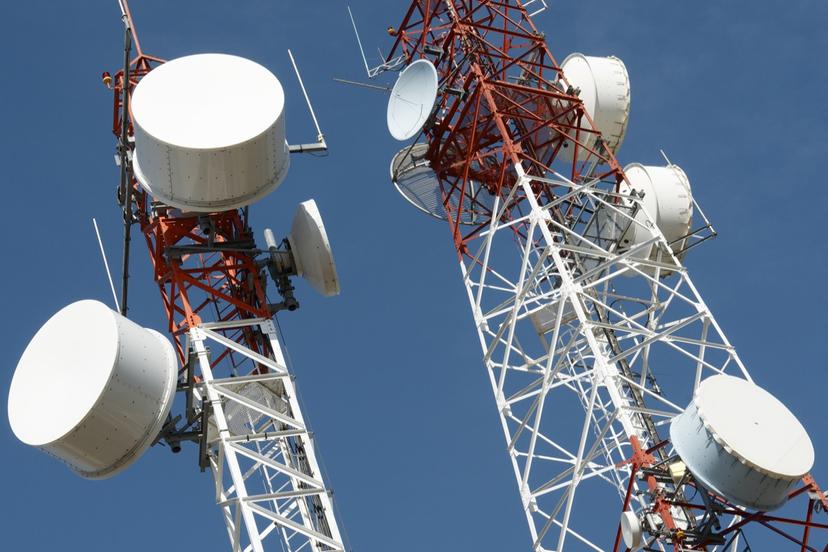Telecommunications

Industry Outlook
The telecommunications industry has become essential for keeping people connected during the coronavirus pandemic. As more people have been working from home in the U.S., as well as around the world, the telecommunications sector has helped businesses, individuals, and societies to stay informed and connected. Increased demand for broadband, mobile, voice, and other services has contributed to the strong performance of the telecom sector during the pandemic. According to one industry report, the challenge for telecommunications companies going forward will be to balance the increased demand for the short term while managing their budgets to withstand an extended economic downturn.
The rollout of the COVID-19 vaccine in 2021 will bolster the economy, and the wireless telecommunications carriers industry is positioned well for growth through 2025. A report by market researcher IBISWorld predicts that rising demand for wireless data services will offset the drop in demand for voice-only services, especially since more broadband-enabled devices like tablet computers and e-readers have wider penetration. Growth in this industry post pandemic will also be fueled by the ongoing implementation of fifth-generation technology. The global telecommunications network outsourcing industry, which was estimated to be valued at $65 billion in 2020, is expected to grow to $78 billion by 2027, at a compound annual growth rate of 2.6 percent in that time frame, according to a Research and Markets report.
In general, employment in the wired telecommunications industry is predicted to decline through 2028, although some jobs will experience higher demand than others. For example, information security analysts and market research analysts will experience high demand and employment growth in the coming years. The increased frequency of cyberattacks will create high demand for information security analysts; banks, corporations, and other businesses will need help managing their security services. Market research analysts will be needed in telecommunications businesses to research consumers and create and manage their marketing strategies. Radio, cellular, and tower equipment installers and repairers, however, are expected to have slower than average employment growth in the coming years. Growth may be tempered somewhat by industry consolidations and strong price competition among telecommunications companies.
Internet-based telephone services will increase competition and bring many technological functions closer together. Further impacting employment in the telecommunications industry is the use of telephone landlines increasingly being replaced by mobile phone services. The Pew Research Center reported in 2019 that most Americans (96 percent) owned a cellphone, and that 81 percent owned smartphones, a huge increase compared to just 35 percent who owned a smartphone in 2011. More than 75 percent of Americans also own various other wireless devices as well, such as laptop computers, tablet computers, and e-reader devices. About one in five American adults don't have traditional home broadband service, and rely only on their smartphones for Internet use. Most people choosing to discontinue landlines in favor or wireless phones only cited costs and convenience among the reasons for their decision.
The Department of Labor predicts a 2.6 percent decline in employment for the wireless telecommunications carriers industry (not including satellites) through 2028. There will continue to be job opportunities due to the growing use of, and widening demand for, wireless technology for mobile computing and the continuing expansion and upgrading of wireless systems. The introduction of more dependable equipment, and the outsourcing of existing positions to specialized contractors will reduce employment opportunities for telecommunications equipment installers and repairers. Slower than average growth in employment also is expected for electrical and electronics engineers.
One challenge the industry continues to face is infrastructure development, deployment, and improvement. Consumer demand for data delivered via Wi-Fi continues to rise sharply and was projected, by the TIA, to account for more than 75 percent of all wireless service spending in the coming years. Use of mobile data was expected to exceed available spectrum, driving the need for the industry to seek better ways of sharing and managing spectrum bands to maintain quality of service. In 2019, the fifth generation of technology standard for cellular networks started to deploy worldwide. As described in a PC Magazine article, 5G "brings three new aspects to the table: bigger channels (to speed up data), lower latency (to be more responsive), and the ability to connect a lot more devices at once (for sensors and smart devices)." More 5G applications are expected to be introduced to the market in the next few years, and the impact of this fifth-generation mobile transition is projected to evolve through the next decade.
Another vital industry issue will be the need to improve security on mobile and wireless networks without diminishing functionality and user experience.
